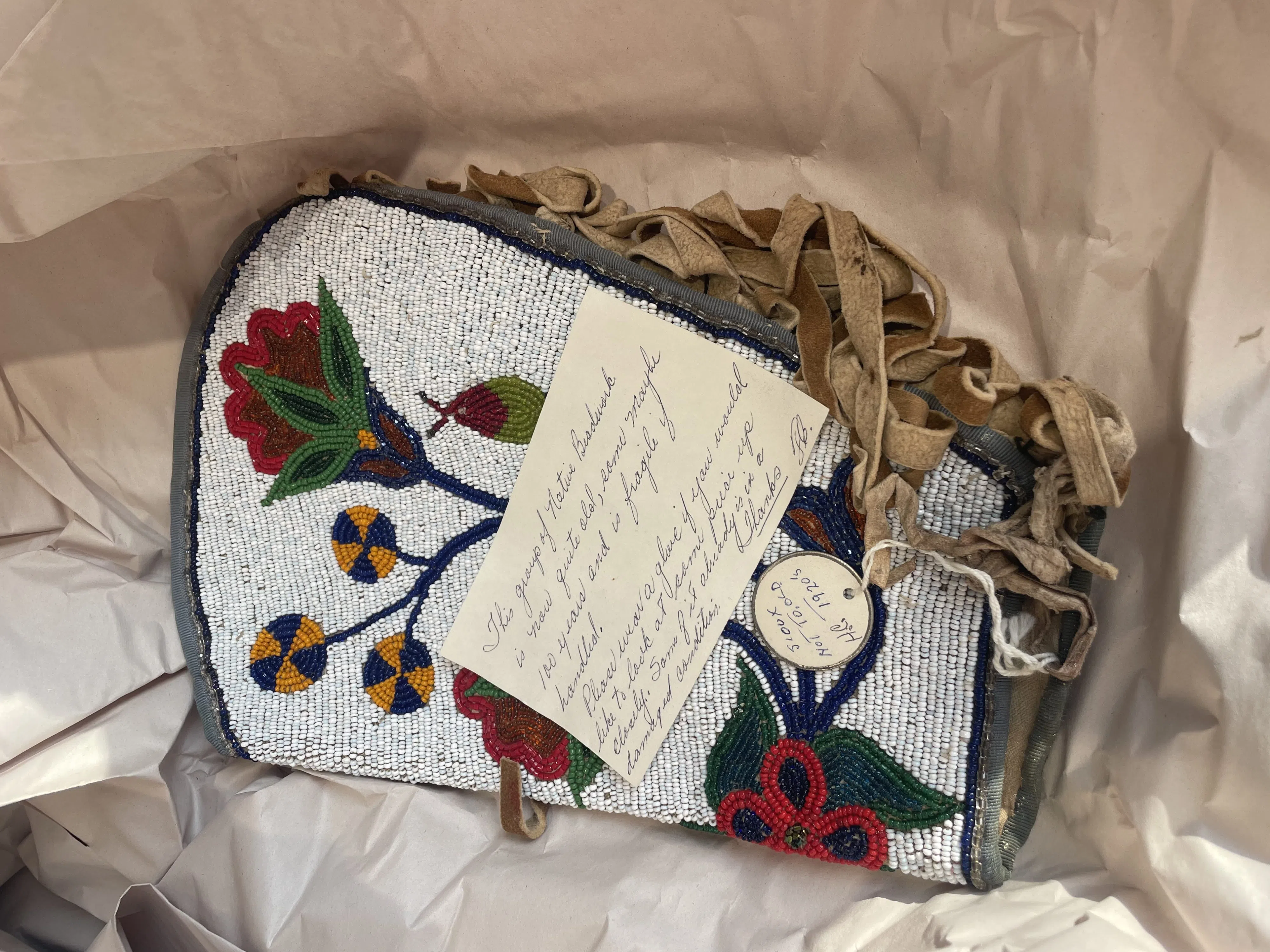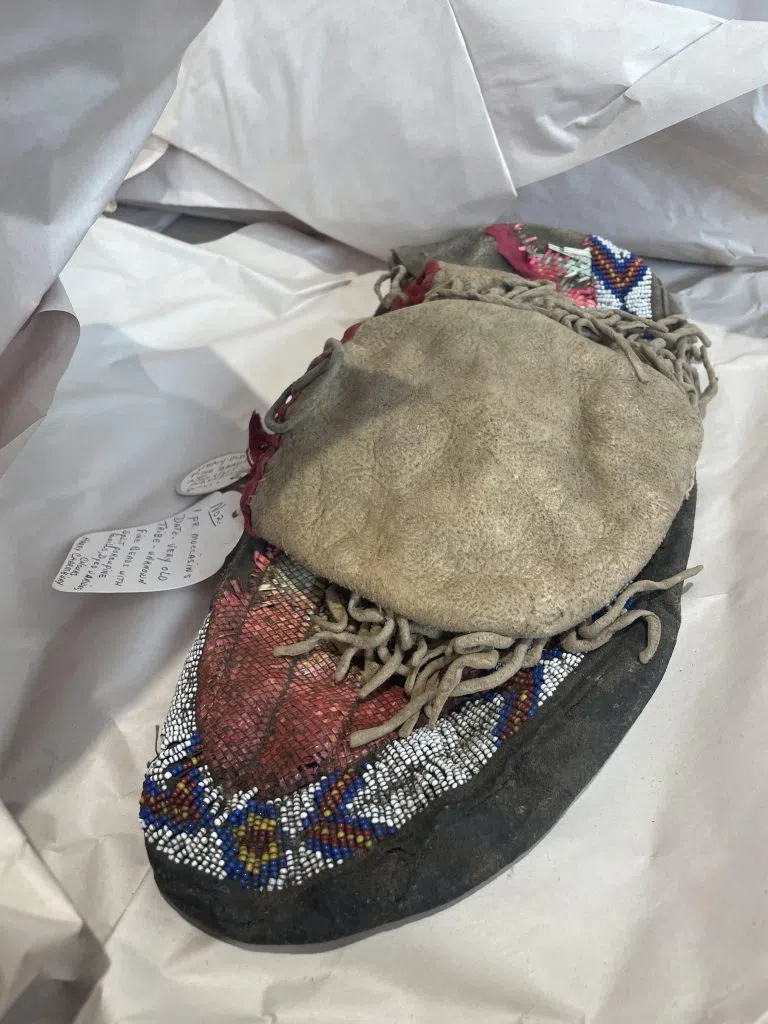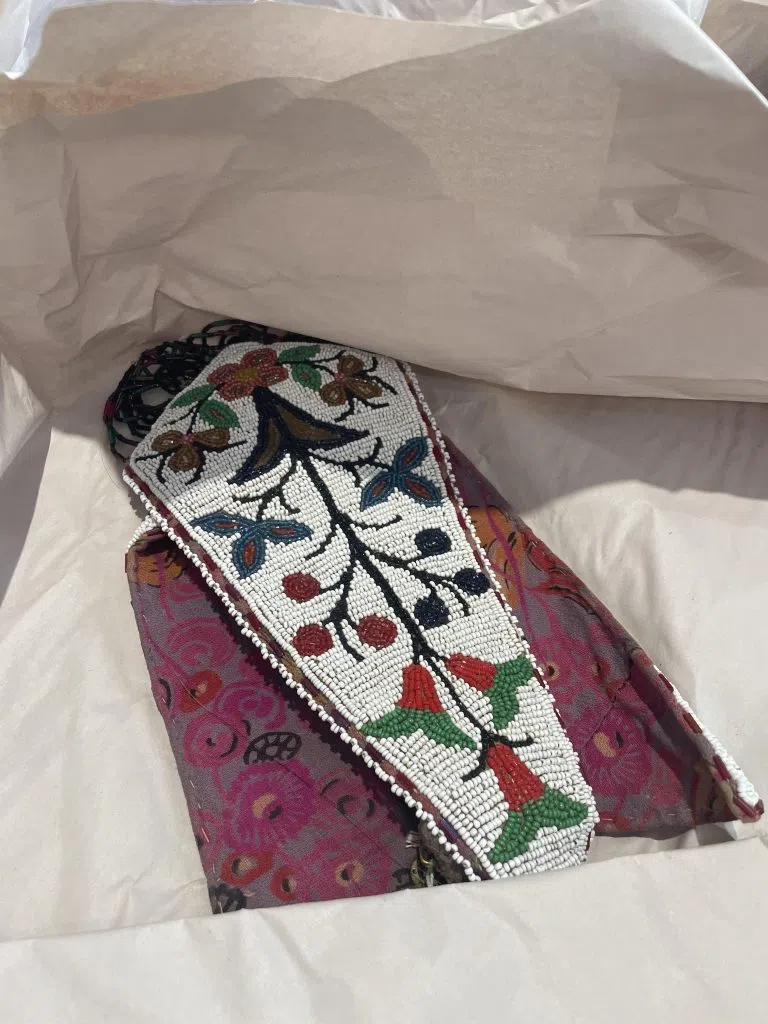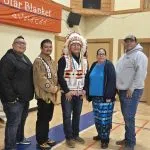
Whitecap Dakota Nation receives pieces of long-lost history
Artifacts missing for more than a century have made their way home.
What was returned to the Whitecap Dakota First Nation (WDFN) shocked even those who were working to repatriate the items.
“I thought it was going to be a little box, but they carried in two big totes, full,” said WDFN Councillor Frank Royal. “We were amazed by all the stuff that was in there.”
It all started on June 16, when the Canadian Museums Association and the Saskatoon Charmbury family, coordinated the return of more than three dozen items of historical and ceremonial importance.
The two large totes were opened to reveal headdresses, beaded moccasins, regalia, among other items and incredibly, most of which were tagged with dates.
The vast collection was held by the Charmbury family, for decades.
“These artifacts are all connected back to our people, back to Whitecap Dakota,” said Royal. “It’s an important part of Reconciliation – reclaiming our language, our culture, our artifacts, and having them part of our community.”

The artifacts were originally acquired by Harry and Florence Charmbury, photographers from the Prince Albert and Saskatoon regions in the early 1900s.
The photographers worked frequently in rural and northern Saskatchewan. According to the City of Saskatoon website:
“In 1948, Mr. Harry Charmbury purchased the W.J. English house. Charmbury was a professional photographer who moved to Saskatoon from Prince Albert in 1918. Most of his work was portraiture, photographing First Nations Leaders, contracts for City Hall and many other groups and events.”
Although the artifacts were labelled it’s unknown by what means the artifacts were acquired.
The collection remained in the family, until Mark Charmbury the grandson to Harry and Florence came across the items.
“(My siblings and I) all agreed that we needed to get them back to whoever they belonged to,” said Charmbury.
“The idea of Reconciliation resonates with us, so we needed to figure out a way to get these back to where they belonged. We knew this was something we didn’t own.”
Charmbury sought out his friend, Stephanie Danyliuk, a senior manager of community engagement at the Canadian Museums Association, who previously worked as a policy and history researcher at Whitecap Dakota.
She connected with Whitecap and Frank Royal, informing him of the artifacts they identified as belonging to the First Nation.
“For a private collection, there’s no formal process or legal mechanisms that stops them from being sold or traded privately, so that’s sometimes an issue for First Nations that are looking to repatriate items,” said Danyliuk.
The repatriation process, went smoothly.
Last year, Sid Gough returned some items his father had acquired to Cote First Nation.
“In this case, the family quickly determined the most ethical thing to do was to return these items to the community,” said Danyliuk.
A formal ceremony took place when the artifacts were returned on June 16, followed by a public display at the First Nation.
Venn Morin said to see the items up close and personal resonated with him.
“It was very powerful seeing these items returned to the community,” he said.
The experience filled him with pride and a renewed sense of hope.
“It’s knowledge brought back for me and my children,” said Morin. “[They] are able to look into the past of their ancestors. Just to have them in our presence on reserve was huge.”
The artifacts are now kept at a vault at the Western Development Museum, which Whitecap Dakota can access whenever they wish to display the items.
“People were amazed that something this old has come back to their community,” said Royal.
Whitecap Dakota and Royal, have been working on repatriating lost artifacts for years.
In 2023, council reclaimed a pipe belonging to Chief Whitecap.
The ceremonial pipe was acquired by Lieutenant William Hamilton Merritt III in 1885 during the Riel Resistance, 140 years ago. The pipe remained in Fort York museum in Ontario until the Royal Canadian Military Institute found its true home.


